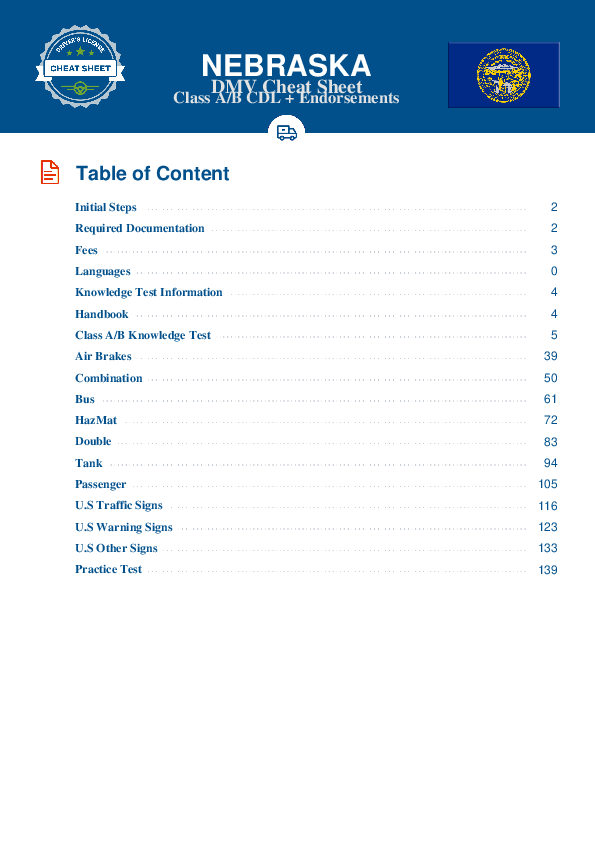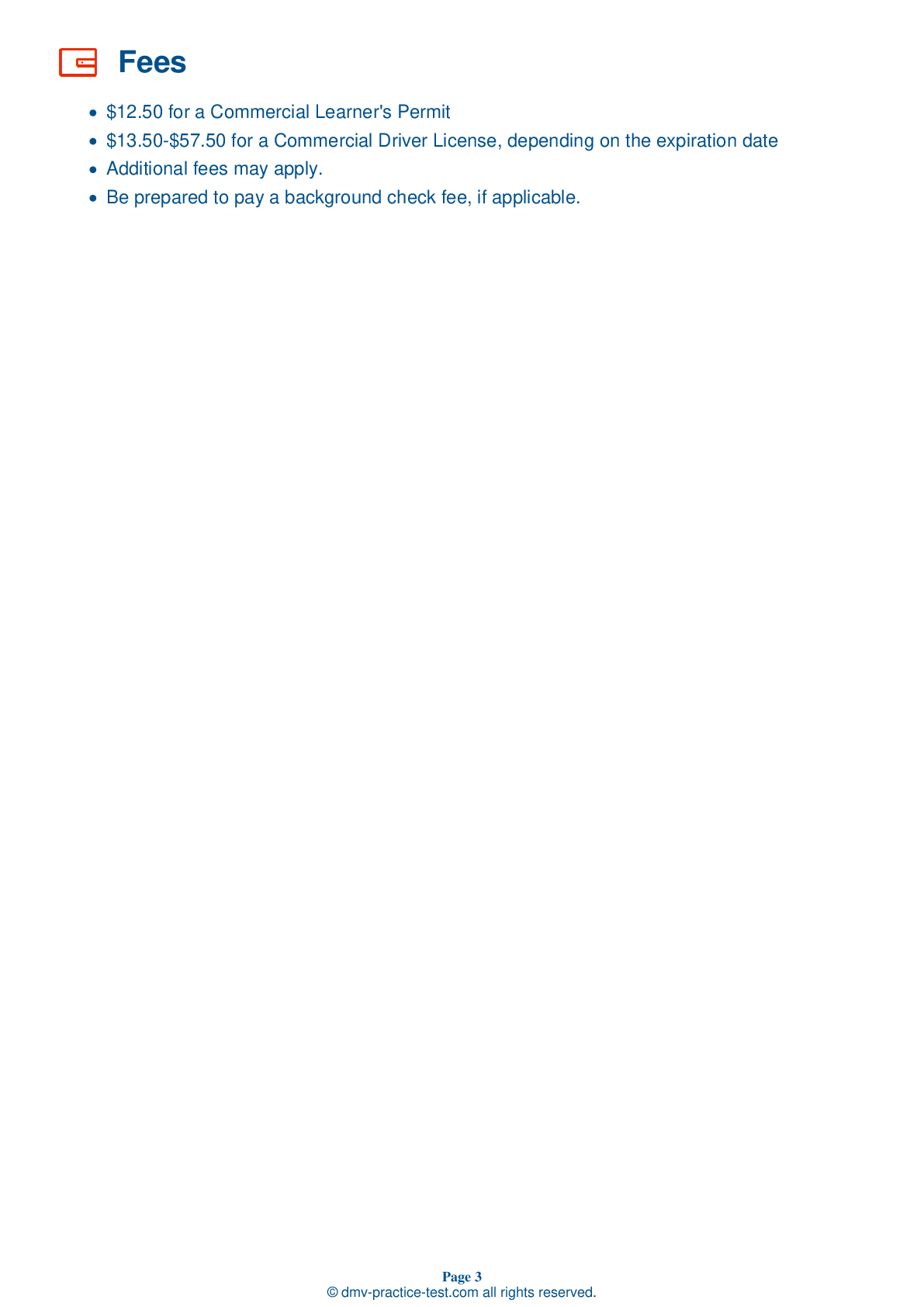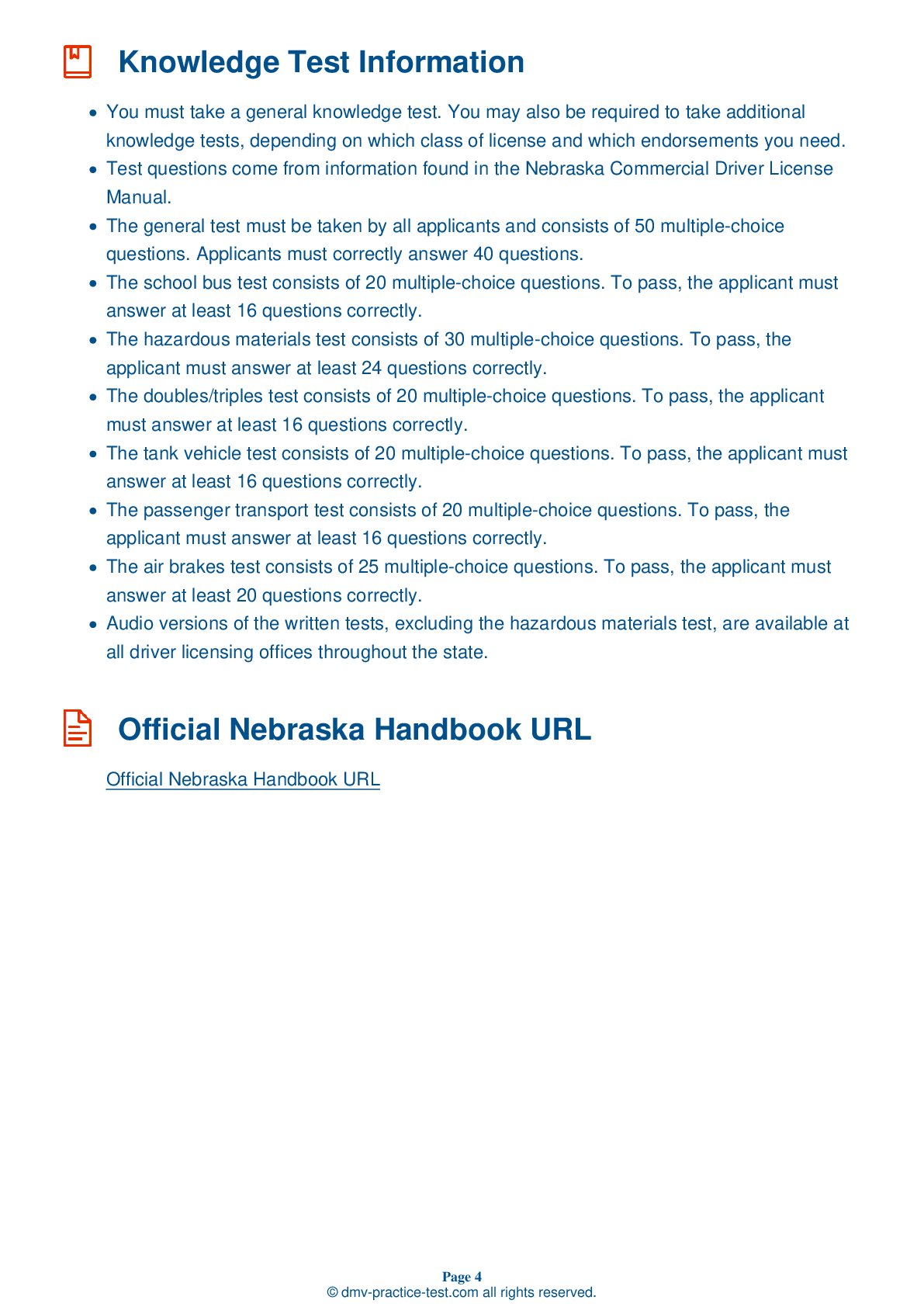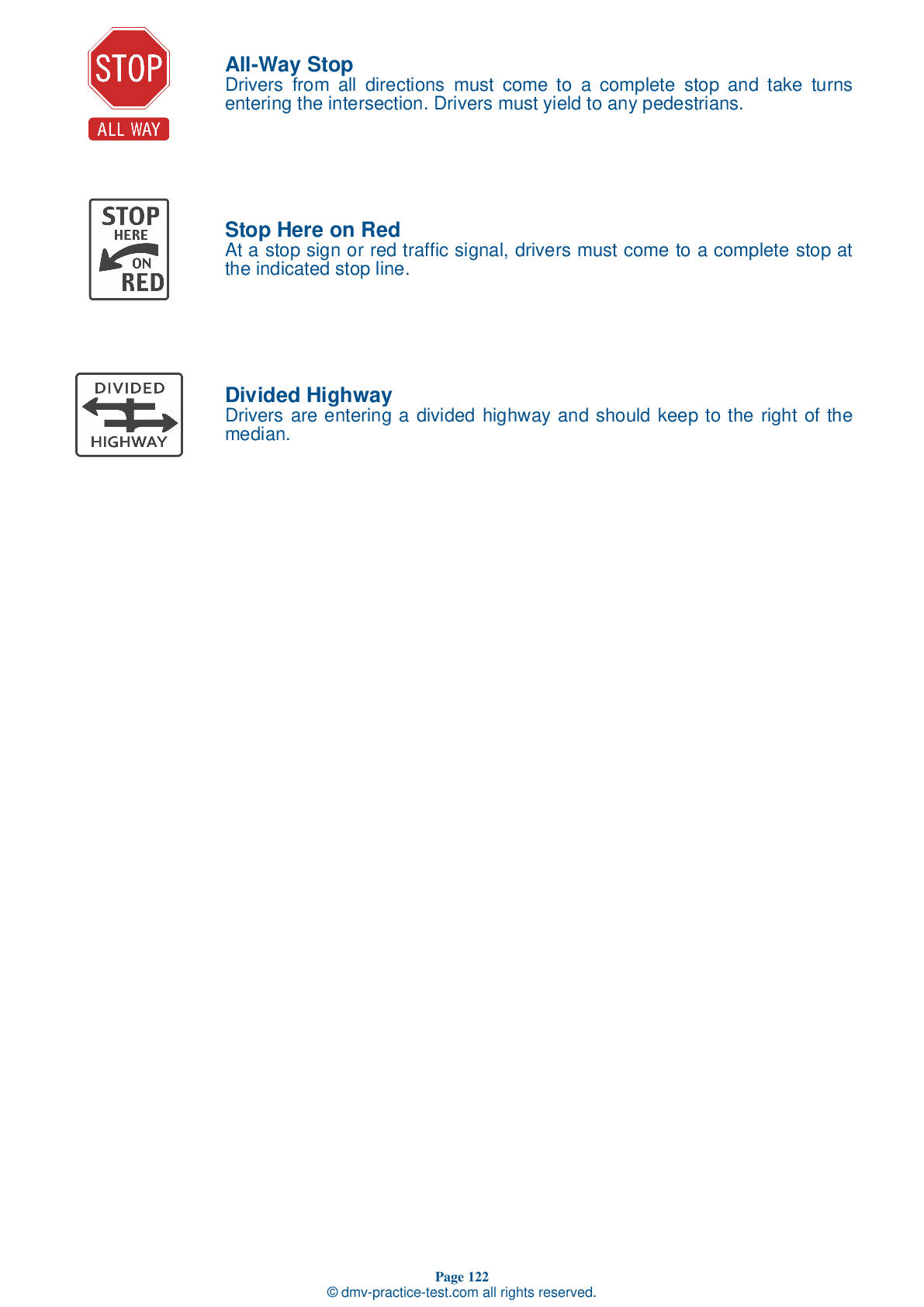HazMat #2
Hazmat Test | Nebraska 2025 #2
On our website, we provide FREE practice - CDL hazmat test online! The official exam test consists of several obligatory parts, with all of them checking your knowledge of different blocks of road rules. If you need to obtain a NE CDL hazmat endorsement in 2025, practice as much as possible. Free sample tests published on our website will help you check and improve your knowledge and boost your grades. Please bear in mind that Nebraska requirements for issuing a hazmat endorsement for CDL may vary from those established in other states.
30
24
20
1 . On a shipping paper describing both hazardous and non-hazardous materials, the hazardous materials may be identified by being:
If a shipping paper includes information about both hazardous and non-hazardous materials, the hazardous items must be clearly identified on the paper. They may be entered first, highlighted in a contrasting color, or identified with an "X" placed before the shipping description.
2 . Many products classed as poison are also:
Sweet-tasting.
Many products classed as poison are also flammable. Take the appropriate precautions if you think your cargo may be flammable.
3 . Who must mark and label the materials for shipping?
Shippers of hazardous materials are required to warn drivers and others about the risks of the materials by putting hazard warning labels on packages, putting placards on the transporting vehicles, and providing proper shipping papers and emergency response information.
4 . When traveling with Division 1.1 explosives, you may park no closer than ____ from the nearest building.
When carrying Division 1.1, 1.2, or 1.3 explosives, you should not park within 300 feet of a bridge, tunnel, or building, unless you are parking for a short period of time while performing an operational necessity, like refueling.
5 . If you apply for an original or renewal HazMat endorsement, you must undergo a check through which agency?
The local law enforcement agency
To obtain a hazardous materials endorsement, you must pass a security check conducted by the Transportation Security Administration (TSA).
6 . When Division 1.3 materials are being transported, the floor liner should be:
You should use a floor lining when transporting Division 1.1, 1.2, or 1.3 materials. The floors must be tight and the liner must be made from either non-metallic material or non-ferrous metal. Non-ferrous metals are any metals that do not contain iron or iron alloys.
2025 Nebraska | Frequently Asked Questions
A CDL Class A license in Nebraska allows the holder to operate any combination of vehicles with a Gross Combination Weight Rating (GCWR) of 26,001 pounds or more, provided the Gross Vehicle Weight Rating (GVWR) of the vehicle(s) being towed exceeds 10,000 pounds. It is typically used for driving tractor-trailers, truck and trailer combinations, and livestock carriers.
A Class A CDL license in Nebraska allows the holder to operate vehicles such as tractor-trailers, truck and trailer combinations, tank vehicles, and livestock carriers. It can also be used to drive flatbeds, and vehicles towing trailers or other vehicles over 10,000 pounds. However, certain endorsements may be required for specific types of vehicles.
To obtain a Class A CDL license in Nebraska, you must be at least 18 years old (21 for interstate driving), possess a valid Nebraska driver's license, pass a vision exam, and complete a written knowledge test. You also need to pass a skills test, which includes a pre-trip vehicle inspection, a basic controls test, and an on-road driving exam.
In Nebraska, you must be at least 18 years old to qualify for a Class A CDL license. However, if you plan to drive across state lines or handle hazardous materials, federal regulations require you to be at least 21 years old.
No specific endorsements are required for a Class A CDL license in Nebraska. However, certain types of driving jobs may require specific endorsements. For instance, hauling hazardous materials requires an H endorsement, transporting passengers requires a P endorsement, and driving tank vehicles requires an N endorsement. These endorsements require additional testing.
The Class A CDL skills test in Nebraska encompasses three main parts: the vehicle inspection test, the basic controls test, and the road test. The vehicle inspection test checks your ability to assess the safety of a commercial vehicle. The basic controls test evaluates your ability to maneuver and control the vehicle. The road test assesses your on-road driving skills.
Yes, Class A CDL license holders in Nebraska may face certain limitations based on their skills and medical conditions. For instance, if they can't operate a manual transmission, they'll get an automatic transmission restriction. If they fail the air brakes knowledge test or skills test, they'll get an air brakes restriction. Also, medical conditions might limit their driving privileges.
In Nebraska, the written Class A CDL test is primarily administered in English, following federal regulations. However, the Nebraska Department of Motor Vehicles (DMV) provides an interpreter for those who cannot understand or read English. It's important to contact your local DMV office in advance to request this service.
Yes, you can request accommodations for the Class A CDL written test in Nebraska if you have a disability. The Nebraska Department of Motor Vehicles (DMV) complies with the Americans with Disabilities Act (ADA) and provides reasonable accommodations to individuals who require them. To request accommodations, you should contact your local DMV office ahead of your test date.
If you don't pass the Class A CDL written test in Nebraska on your first try, you can retake it. However, you must wait at least one day before retesting. There is no limit on the number of times you can retake the test, but keep in mind each attempt requires a new fee.



